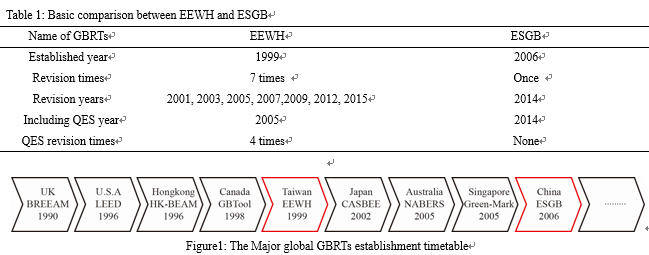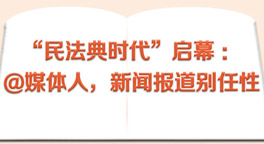Comparison of terminal indicators scoring methods between ESGB and EEWH
Abstract: The negatively environmental impact of building sector has awakened considerable interests in green building and its evaluation system. Furthermore, Green Building Rating Tool (GBRT) is the cornerstone of the green building development. In China, the Ministry of Housing and Urban-Rural Development (MOHURD) enacted a GBRT in 2006, which is named Evaluation Standard for Green Building (abbreviated as ESGB 2006), and updated ESGB 2006 with the establishment of the quantitative evaluation system (QES) in 2014 (novel version abbreviated as ESGB 2014). Currently, a large number of comparative studies were mainly focused on evaluation contents in four levels, labeled as the general comparison, category comparison, criterion comparison, and indicator comparison, instead of the quantitative evaluation system (QES). Furthermore, the scoring method of terminal indicator (SMTI) is a vital part of QES. Thus, this paper seeks to comparatively study on SMTIs between ESGB and EEWH, the GBRT adopted in Taiwan, so as to fill this research gap partially, and the up-to-date version of two GBRTs (ESGB 2014 version and EEWH 2015 version) were chosen as the two samples. Five steps will be conducted in this study, including the confirmation of similarity of two GBRTs’ QES, re-categorization of SMTI, classification of terminal indicators (TI), comparison of SMTI type and corresponding utilization rates, and discussion and proposing suggestions for ESGB. Based on those works, the main conclusion was obtained: The QES of EEWH is mature than ESGB, since the QES of EEWH and ESGB primarily rely on the formula scoring method (FSM) and the direct scoring method (DSM) respectively with the same utilization rate (63.9%) and FSM is more reliable in quantitative assessment than DSM. Then, four enhancing suggestions for QES of ESGB were proposed: for instance, FSM is strongly recommended to be frequently utilized by ESGB rather than DSM and artificial scoring method (ASM) is highly recommended for the evaluation of innovation indicators in ESGB.
Key words: ESGB; EEWH; Green building rating tool; Quantitative evaluation system; Scoring method; Terminal indicator
1. Introduction
1.1 Research Background
As the negative environmental impact of building sector has awakened considerable focuses, the “Green Building” movement is gaining momentous, which directly promotes the development of the Green Building Rating Tool (GBRT). GBRT is an effective approach to assess the impact of building on the environment[1,2] and identify the “Green Building”, thus, dozens of GBRTs including BREEAM, LEED, CASBEE, and others, have been established worldwide to facilitate the development of green building[3]. The implement of building energy saving was the initial stage of green building development in China[4], thanks to the issue of the first energy-efficient design standard for heating-dominant civil building in 1986[5]. Subsequently, in 2006, the Ministry of Housing and Urban-Rural Development (MOHURD) issued a GBRT, named Evaluation Standard for Green Building (abbreviated as ESGB 2006)[6], and revised this standard with the introduction of the quantitative evaluation system (QES) in 2014 (abbreviated as ESGB 2014)[7], with the aim of emphasizing the conservation of energy, water, material and site and environment protection[4].
1.2 Current research gap
Lots of comparison studies[4,8] among ESGB and other earlier established GBRTs such as BREEAM and LEED have been conducted, so as to assist the polishing of ESGB. However, currently, the comparisons were primarily concentrated on evaluation contents in four levels, labeled as the general comparison, category comparison, criterion comparison, and indicator comparison[8], rather than the quantitative evaluation system (QES). Apparently, more attentions need to be focused on QES, since that the quantitative evaluation is less likely to be impacted by the subjective judgment compared to the qualitative evaluation. Thus, quantitative assessment approach is strongly recommended by some world leading GBRTs, such as BREEAM, the earliest established GBRT in the world, set up “ Use quantified measures for determining environmental quality” as one of the basic development principles”[9]. Furthermore, the bottom stage of QES is the quantitative scoring of terminal indicators, which also serves as an initial and foremost step of QES. Hence, this study focuses on the comparison of quantitative scoring methods of terminal indicators (SMTI), so as to fill the research gap partially.
1.3 Comparative study case choosing
Additionally, regarding the comparative study case, a GBRT adopted in Taiwan named EEWH is a suitable one for ESGB. Two reasons, at least, can explain the significance of EEWH to polish ESGB. Firstly, EEWH is a relatively mature system with QES. As shown in Tab. 1, EEWH was established in 1999 with 7 times revision till now[10], which was built earlier than CASBEE (2002), NABERS (2005) and Green-Mark (2005) (Fig. 1). Most importantly, EEWH included QES since 2005[10], which was upgraded 4 times until now. As shown in Tab. 1, EEWH’s QES is more mature than ESGB (establishing QES in 2014 without revision). In addition, the comparison of some general information between ESGB and EEWH can be achieved in Tab. 1.
Interestingly, most studies have ignored EEWH, for instance, a study[8] published in 2017 which seeks to systematically review the existing literature on green building assessment methods didn’t contain any content associated with EEWH. Furthermore, a review article published in 2014[11], which focuses on the critical review of the existing body of knowledge of researchers related to green building, didn’t mention any information related to EEWH at all.
Secondly, the development experience of EEWH is more suitable for ESGB compared to some global leading GBRTs, such as BREEAM and LEED. Reportedly, according to studies, Asians on average are thinner and shorter than Westerners, which directly lead to the default occupancy levels of ESGB are much higher than the other schemes [12]. From this perspective, comparing to some GBRTs established by westerner world, the development experience of EEWH can match ESGB’s upgrading demands better. Furthermore, the most significant, ESGB and EEWH are developed under same Chinese cultural context and similar lifestyle. Considering the profound impact of culture and lifestyle to the understanding of green building in a specific region, EEWH deserves more attention so as to facilitate the ESGB improvement.
Overall, this study focuses on the comparison between ESGB and EEWH from the perspective of SMTI and seeks to provide some enhancing suggestions to ESGB finally. The main contributions of this study are: (1) serving as the key input and information for authorities of SMTI of QES in GBRTs and (2) providing a useful reference to the evolving of SMIT related to the green buildings that may be applicable in other contents.
2. A brief introduction of ESGB and EEWH and version selection
2.1 ESGB
In China, on the foundation of Green Olympic building assessment system (GOBAS) which was enacted in 2003, The Chinese GBRT titled as a national standard (Evaluation standard for green building) (ESGB 2006) was issued by MOHURD in 2006[6]. Then, a novel version of ESGB[7] (ESGB 2014) was acted out in 2014, which included seven groups of indicators (conservation of land and outdoor environment, energy conservation and energy utilization, water saving and water resource utilization, material saving and the material resource utilization, indoor environment quality, operation management and construction management)[4]. Each group of indicators contains two types of items - control items and score items - and the total score of each group of indicators is 100 point. In addition, the innovation item was also set uniformly by the ESGB in order to encourage the technical innovation of green building.
 |
分享让更多人看到 
推荐阅读
相关新闻
- 评论
- 关注




























 第一时间为您推送权威资讯
第一时间为您推送权威资讯
 报道全球 传播中国
报道全球 传播中国
 关注人民网,传播正能量
关注人民网,传播正能量